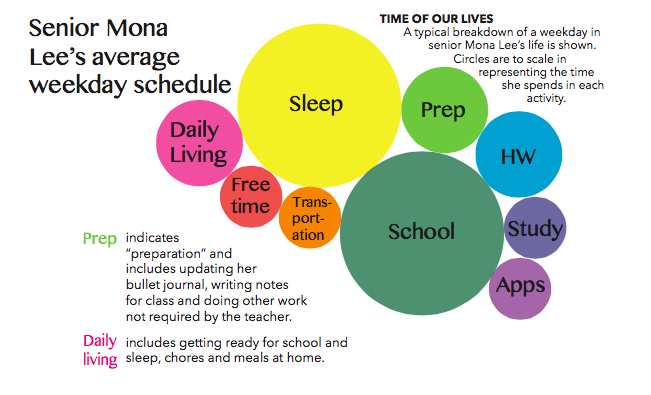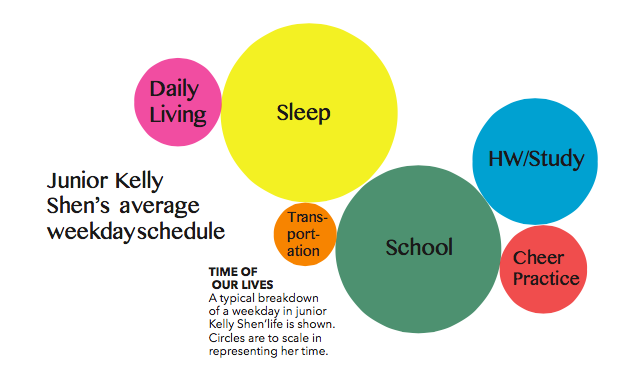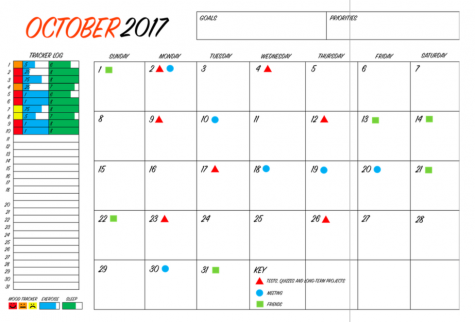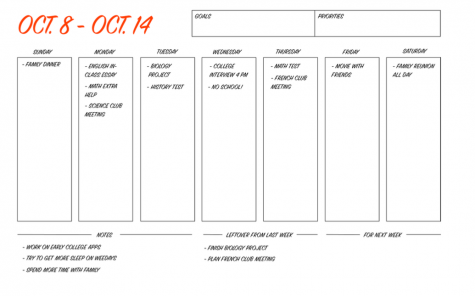Upper school tackles best methods for time management
October 12, 2017
Freshman dean Jeffrey Draper, sophomore dean Kelly Horan and chemistry teacher Dr. Smriti Koodanjeri introduced a new time management program to the upper school this fall for the freshman class and includes time management classes and official Harker planners.
“The three of us when we met last year, the goal here was to change the culture from ‘Oh my god, I have so much homework to do!’ and ‘I sleep at three a.m. in the morning!’ to you know what, someone telling the person why don’t you try using your planner. We have planners you can work with and we have teachers who can help.” Dr. Koodanjeri said.
The upper school does not offer time management or study skills classes, and the new program was mean to emphasize the importance of planning and organizing, and to introduce freshmen to best practices.
“When it comes to managing our time, it’s more about self-management than time itself,” professional business organizer Yvonne Surrey said. “Time management experts tell you we cannot manage time, we can only manage ourselves in the time we’re given, and that applies to students as well as adults.
The upper school’s program consists six sessions detailing management and study habits to the freshman class during office hours, run by 24 volunteer teachers. The first session, led by Dr. Koodanjeri, introduced freshmen to the planner, and the next session focused on creating goals and prioritizing tasks.
“[My session] was a more logistical session, where I looked at PCR, and one of the things I found last year, we gave the freshmen planners last year, but we didn’t do much instruction with it,” Horan said. “It’s a principle of psychology that we always think that we’ll be faster at something that we actually are. So, how do we realistically schedule the time that something is going to take?”
Although all freshmen received a planner, students could return them if they prefered to use other methods of time management. Thirty-two leftover books were given to the counseling office and Dr. Koodanjeri, who sent an email offering them to sophomores and juniors, who claimed all the remaining planners.
“The first pages of the planner actually guides you through the process of thinking [about] what you want, your goals [and] your visions,” Dr. Koodanjeri said. “Basically it starts with a vision and you break it down to what we call goals and you break them down to small ones.”
Some students prefer traditional traditional print planners and enjoy the process of physically writing and checking tasks off. Junior Kelly Shen developed her organizational skills in order to manage her academics, extracurriculars and sleep schedule.
“I always plan ahead of time what I want to get done in my planner,” Kelly said. “I set out chunks of time that I would designate to accomplishing certain tasks, and I try to make it as realistic as possible. So, if I know I can’t finish a given assignment in half an hour, I’ll definitely put it for a longer block of time. Aside from that, when I am doing my work, I am focused and not distracted by anything, so that I can be the most efficient I can be.”
Other than using a planner, online apps and trending bullet journals can assist with time management. According to Laura Vanderkam, author of multiple time management books, the most important factor in time management is writing tasks down.
“People ask questions like ‘what is a great app or program’ or something. If you’re into apps, then great, if you’re into just a notebook . . . that can work too,” Vanderkam said. “I think everybody needs some form of calendar that they can look at frequently. That can be an electronic calendar if you want but it can also just be a paper calendar.”


Draper, Horan and Dr. Koodanjeri plans to expand the upper school’s time management program to include parents in the future.
“Time is the most important thing for a student, and not money and not fame. Being able to master time is the most efficient way to find happiness in the way you live life day by day and moment by moment, hour by hour, week by week, year by year,” Draper said.
Bullet journaling trend gains popularity
An assortment of colored gel pens and thin-point markers lie to her side. Two pages are illustrated with arrow-shaped bullet points and intricate, careful calligraphy. Detailed illustrations and tables line the outer margins of the pages, filled in with the full range of the rainbow. ‘October’ in cursive script is inscribed on the top, and below, the life of Mona Lee (12) is plotted out into 24-hour increments.
Bullet journals, with their artistic, handwritten and individualized layouts, are just the latest trend in time management.
Ryder Carroll created the Bullet Journal, a individualized and personalized planner, in 2015 as a method to stay focused and be creative and to encourage self-discovery.
“There is a place for everything that pops into your head because our brains aren’t always linear. We tend to think they are, but they’re not,” History teacher and bullet journaler Donna Gilbert said. “So you’ll be thinking about an activity or be planning out the various aspects of things you have to do, and then something else can pop into your head.”

Bullet journals consists of empty pages with light bullets points, or dots. Journalers can organize their the pages into weekly or monthly sections, akin to those in a traditional planner. Other than time management, the blank pages can also be used for jotting down notes, writing reflections, setting goals, tracking habits and drawing.
“It revolves around entering the same events a couple of times into a journal, like there are ‘future events’, ‘monthly events’, and ‘weekly events’ [sections],” Gilbert said, “You do this repetition and as you complete a task or some meeting or event, you either migrate it if the meeting changes to a different day or you ‘X’ it out and delete it.”
Senior Mona Lee also uses and designs her own bullet journal, making weekly and monthly spreads to track her tasks, assignments, moods and habits.
She started the bullet journaling habit in spring of her junior year and watches videos of other journalers online for ideas and inspiration.
“I don’t like planners because it’s so blocked. I felt like I lost interest in it really quickly,” she said. “With my bullet journal, if I’m drawing or if I’m setting up my spreads on my own, I’ll be more likely to fill it out myself. I’ve tried other task management systems but I’ve felt they were just too plain and too cold. With my online software, I felt like I was just copying and pasting my PCR [school homework website] in, and there wasn’t much flexibility with the program itself.”

